The sawdust on the floor gave it away: this was actually a living, breathing sort of workshop, not one where the workers are tucked away, out of sight for appearances. My ears perked with each twang of the six strings of a flamenco guitar. There was a few hollow knocks, followed by a bit of sanding.
That’s where the sawdust came from.
Growing up, I played the clarinet and learned music theory while perfecting trills, scales and my embouchure. Upon taking a flamenco course in Seville, I discovered that I shared the innate rhythm bailaores possess, the internal metronome that allows them to recognize palos and styles, then spiral into dance. My ears picked up the 2/4 and 3/4 counts and set my feet into motion with a firm golpe using my whole foot.
There are three big parts to flamenco – el cante, or the song; el baile, or dance; el toque, or the guitar. The guitar is what accompanies the cante, and sets rhythm to the bailaor.
To learn about how flamenco guitars are crafted, Tatiana took us to the Mecca of guitarras flamencas – Guitarrería Mariano Conde. Tucked away from the Ópera area on Calle de la Amnistía, this workshop has existed since 1915 and is operated by a third-generation craftsman and his son.
Mariano hardly looked up from his work as he welcomed us into the bi-lever taller. He was sanding down the intoxicating curves of a flamenco guitar, crafted from cyprus and a century-old design. There was a muttered holaaaaa bienvenidas and a quick dos besos for Tatiana as she led us downstairs into the dimly lit belly of the shop.
The tools of the trade stood against the wall – picks, sanders, measuring sticks, protractors. Nearly two dozen guitars in various stages of development, each showing just a fraction of the work that goes into crafting a lightweight flamenco guitar. In all, about 300 hours of labor go into producing a single instrument.
Mariano descended the stairs, carrying a soundboard over his shoulder. Made of thin strips of cypress or spruce, this part of the guitar provides for the reverberation and the sound that is transmitted when strings get plucked. Once this part of the guitar has been crafted, the sideboards are affixed, followed by the fretboard, or neck.
Just as a painter signs the bottom of a masterpiece, Mariano’s signature comes by way of the carving on the top of each fretboard – his is a minute, gently sloping “M.”
Many of the guitars we saw were in their final stages of production – applying coat after coat of French shellac, drying, or ready for the strings and bridge to be attached. Around the sound hole, Mariano adds another signature of his workshop, one which is solely dedicated to flamenco guitars: the rosette.
Made from carved and dyed pieces of wood, the color and pattern of rosettes changes regularly, and his current design pays homage to the first generation of flamenco guitar craftsmen in his family. The costs begin at 2800€ and rise steadily from there, depending on the wood used and hours of craftsmanship.
Unless, of course, it’s a Sonata.
A list of about 30 names of guitars, named for the poems that accompany the tag, are specially crafted for famous names in flamenco (including the recently deceased flamenco great, Paco de Lucía) and specialty buyers, including musicians who do not perform in the flamenco style. The Sonata guitars are pricey, but done solely by el maestro himself.
Mariano himself was hospitable, answering my questions between teens looking to replace nylon strings and other curious buyers who walked into the shop.
To say the Conde Hermanos, sobrinos de Domingo Esteso, are household names when it comes to flamenco guitars, would be an understatement. I’m not a flamenco aficionado, but can appreciate the discipline and attention it take to perfect an art, be it el cante or el baile or el toque.
The Art of Making, Alma Flamenca from Deep Green Sea on Vimeo.
I visited Guitarrería Mariano Conde as part of the ‘Origins of Flamenco’ tour with OGO Tours. Check out their website for loads more, from food to walking tours to excursions. Javier and Tatiana graciously invited my friend and I free of charge, but all opinions are my own.
If you’re interested in more Madrid and flamenco: My Perfect Madrileño Day | Mercado San Miguel | Where to see flamenco in Seville
Do you like Flamenco?
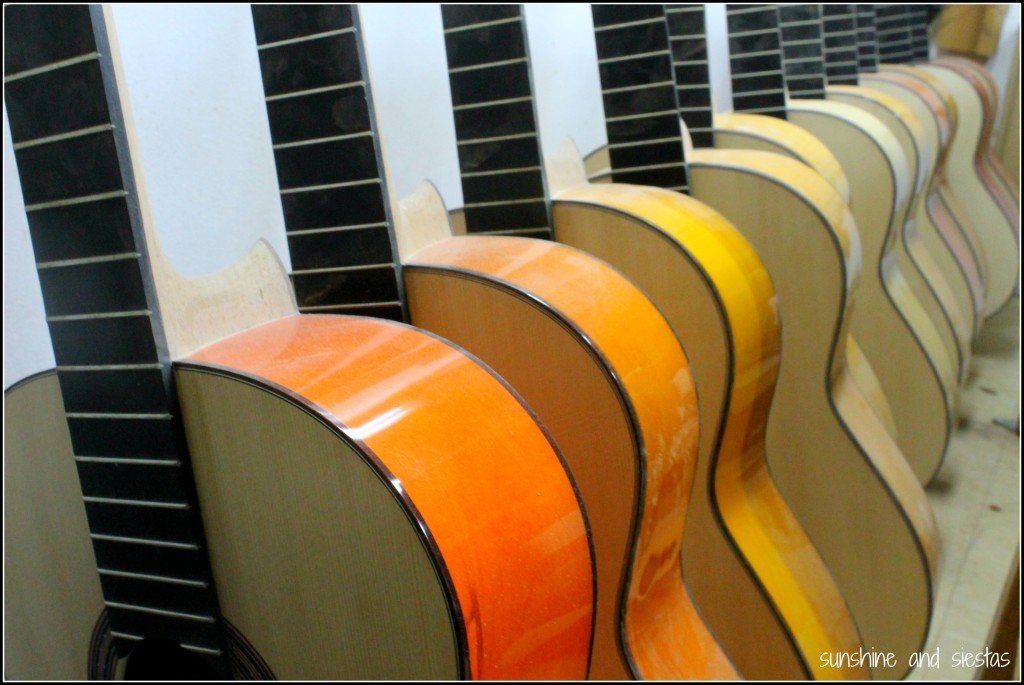
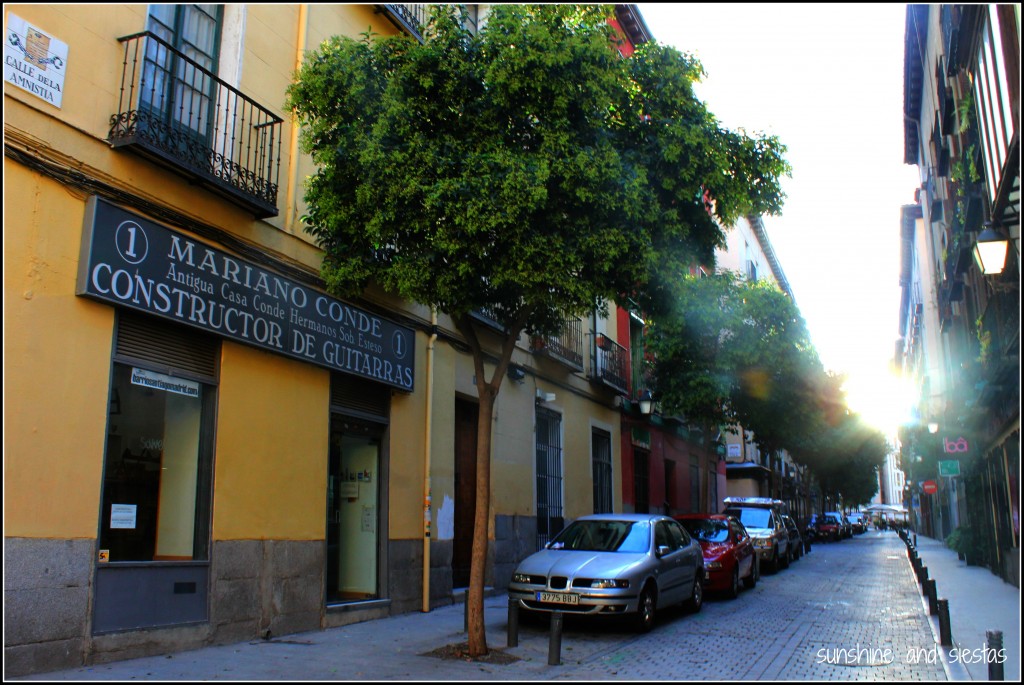
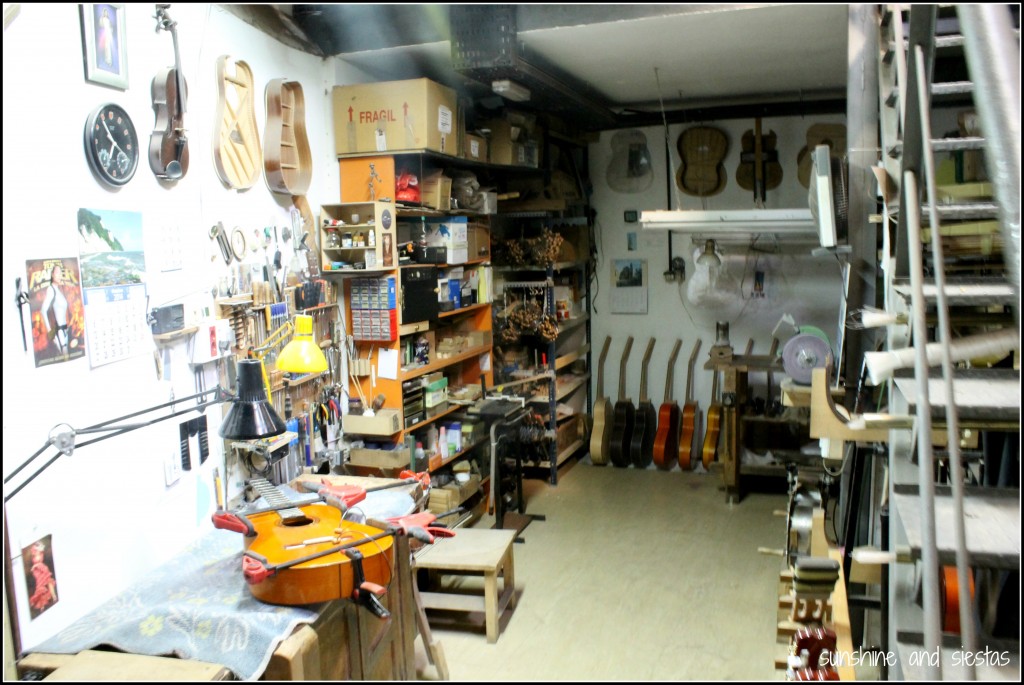
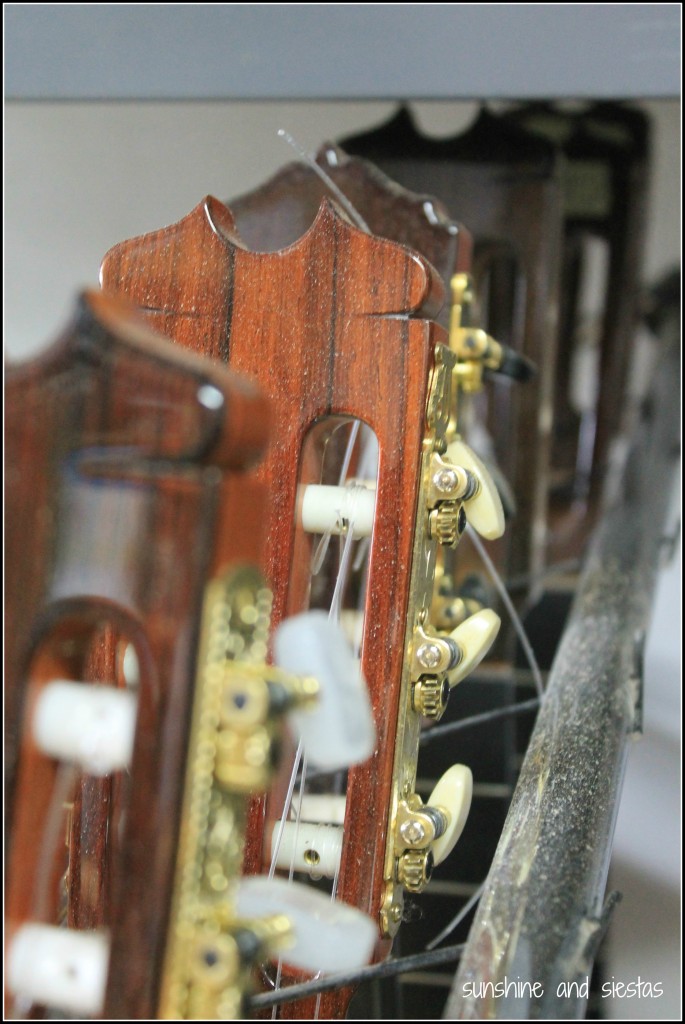
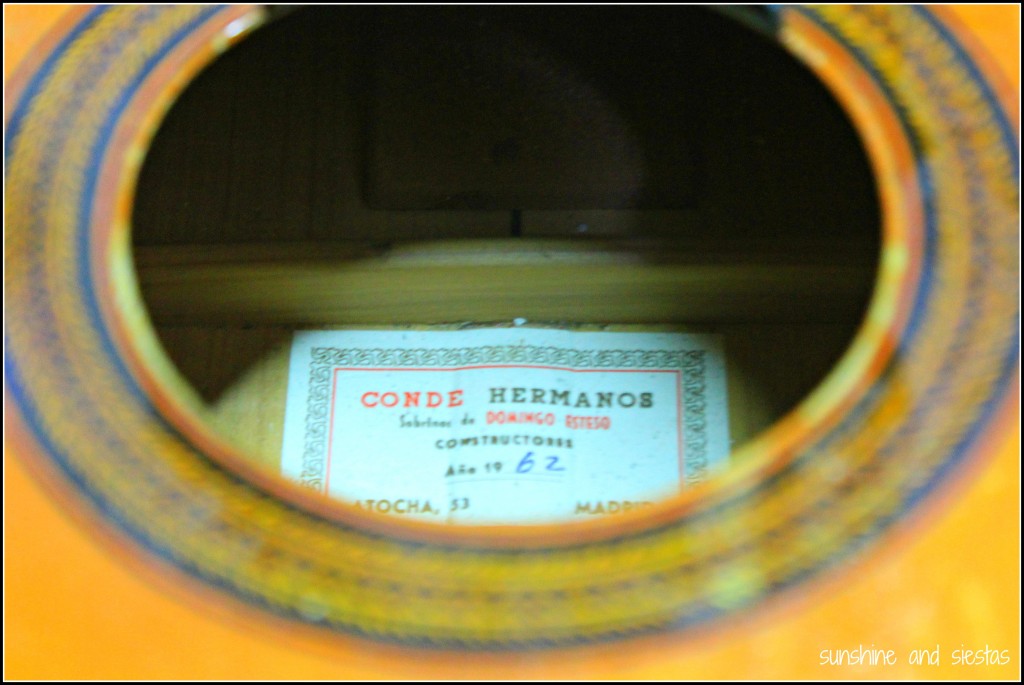
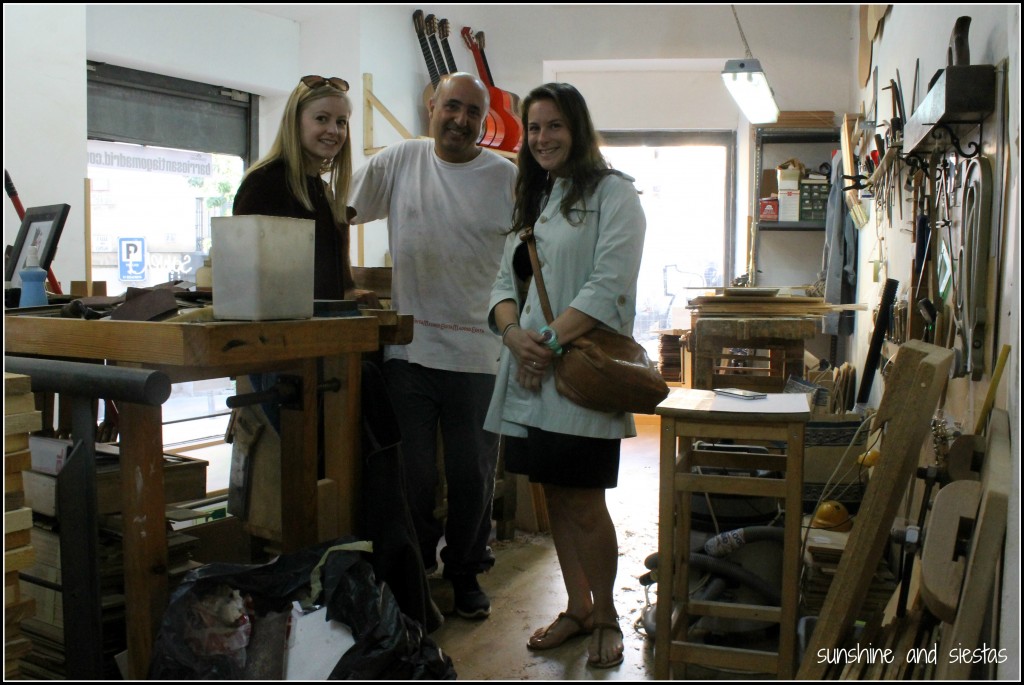





What a very cool place to visit – and learn!
Wandering Educators recently posted..Volunteering in Guatemala: A Life-changing Experience
do you like flamenco? i am sorry Cat, but i do not like it at all, however, i do respect it the most.
i am not even able to distinguish the different “palos” nor do i see the difference between them….to me they just sound the same thing!
having said that, i admit that lyrics are sometimes beautiful and impressive when they talk about sorrow or a love feeling coming from a man about a woman, etc
by the way, lots of songs are really hard to understand if the singer is singing from the bottom of his heart so he is actually mourning or crying.
I do like it, though I am not by any means a die-hard fan (like Betis). I appreciate the skill, the music and the history.
Love this post. To me flamenco in all its forms is simply beautiful; the emotions and just the raw feelings it conjures… amazing! I often listen to guitar and /or cante on my way to work to drown out the morning commute. Too bad I have two left feet because I sure would continue to take lessons. What an amazing tour that must of been. 😉
You live in NYC, don’t you? I should hook you up with my friend who works at the Basque Coalition and is a big fan. She still takes class, though she’s light years ahead of her classmates.
Yup, still here and that would be great. I try to catch shows when I can. I’m sure your friend would get a huge kick out of watching me. My shoes are fabulous but me..ughhhh! hopeless. lol!
This post is making me miss Úbeda…they had a youth flamenco competition while I was there as well as free-ish concerts around Semana Santa that had saetas and stuff. What an amazing experience to see guitars being crafted basically where it all began.
Trevor Huxham recently posted..Sintra, Portugal: Lisbon’s Romantic-Era Getaway
It’s mesmerizing, for sure! Since my flamenca-crazed friend moved away, I haven’t seen many shows. There are plenty in my neighborhood, though I never seem to catch them. I’d love to take up class again, too (and actually found my tacones de clavo during the move!).
We’re sure it doesn’t take quite so long to make a timple. Fascinating article, Cat. And Mariano? A master craftsman.
Gran Canaria Local recently posted..ROES Moda Hombre
Thanks, Matthew!
I love the word guitarrería. Never heard it! Seems like it would be difficult to say, though.
Kaley recently posted..The Curious Case of Francisco Nicolás
Pff, any more difficult that prórroga and homologación?! Those get me every time!
There’s a little place in Torremolinos just like this, just the smell of the wood as you walk through the door is enough to make you want to buy and cherish one of their guitars forever… so I did, and it’s now being proudly played by my 11 year old who is learning the Malagueñas this month

Lindsay recently posted..Planning The Perfect Destination Wedding in Spain
What a beautiful gift to give, Lindsay! I hope my children take up music when they’re older – it’s so enriching! It was a pleasure for me to teach it for a few years (though my soul cried when it came tim to teach the recorder – yikes!)
Ooh, looks like a neat taller to visit! I’m jealous the rhythms of flamenco come naturally to you. Although they speak to me, I definitely can’t keep up. Same goes for sevillanas, which I tried to teach myself via YouTube recently and failed miserably.
Kirstie recently posted..5 Haunted Forests That Will Give You Goosebumps
A few rebujitos, and you’re good to go!
Oh holy wow, this is so cool! Kind of like learning some ukelele basics in Hawaii, I guess…nothing like experiencing some worldwide phenomenon at its source.
Jennifer recently posted..What to Pack for a Maui Vacation
It was really cool! I would have loved to hear Mario play, as well.
i’m actually surprised to see the collection. it would be nice to visit that place.. lovely
lovely 

Gabi@TheNomadicFamily recently posted..10 Year Old Children Today- Modern Parenting Failure #231
It makes for a quick stop between Sol and the Royal Palace, so no excuses!
Those guitars look positively sensual.
Lillie – @WorldLillie recently posted..Dogs in Costume?! The Cutest Fashion Show in Boston.
Is there anything more sexy?
I love that this type of craftsmanship still flourishes — and that Mariano embeds a rose in every guitar.
Terry at Overnight New York recently posted..Ace New York: Puzzled
Spain is many things, but tradition when it comes to their patrimony sticks!! It’s one thing I love about this country.
great . thanks for sharing
Wow! Such a great post. Spanish traditions just give me goosebumps. I’m in love with their natural passion, my grandfather was born in Malaga, and used to play guitar, i remember him playing guitar for me and my sisters… Spanish guitar can be soooooo emocional and with so much character at the same time. Just top!